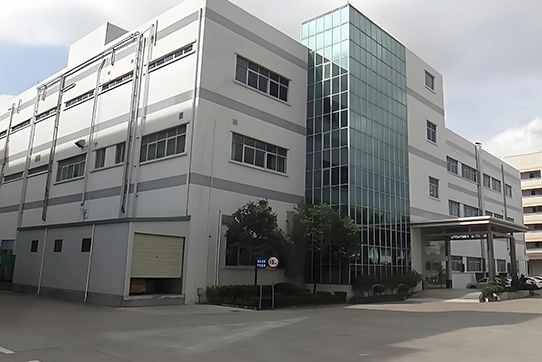Inductors are vital components in alternating current (AC) circuits, leveraging magnetic fields to store energy and influence circuit behavior. This comprehensive guide delves into how inductors function in AC systems, examining their role in creating phase shifts between voltage and current, their impact on power dynamics, and their configurations in series or parallel setups. Additionally, it highlights their wide-ranging applications in technologies such as power supplies, wireless charging, and audio systems, making inductors accessible and showcasing their significance in modern electronics.
Inductors are essential in AC circuits, defined by their inductance, which results from current flowing through a coiled wire to generate a magnetic field. This field resists changes in current by producing a voltage, known as inductive reactance, that opposes the change. Unlike simple conductors, inductors temporarily store energy in their magnetic fields and release it back into the circuit, significantly influencing current flow and signal timing. The arrangement of inductors in a circuit affects the total inductance, shaping the circuit's response to fluctuating currents. According to Lenz's Law, a changing current induces a voltage that opposes the change, causing current to rise gradually in DC circuits until stable. In AC circuits, where current constantly alternates, inductors continuously resist these changes, resulting in a 90-degree lag of current behind voltage in purely inductive circuits. This phase difference is critical for managing power and energy in AC systems.
In an inductor, a changing current alters the magnetic field, generating a counter-electromotive force (EMF) that opposes the source voltage. This counter-EMF is most pronounced at the steepest points of the AC sine wave, around 90° and 270°, where current changes rapidly, requiring the source to supply additional voltage to overcome the opposition. At flatter points, like 180° and 360°, where current changes slowly, the counter-EMF weakens. In purely inductive circuits, this results in a consistent 90-degree lag of current behind voltage, leading to an out-of-sync energy transfer where voltage peaks as current begins to rise, and current peaks when voltage nears zero. This phase relationship underpins reactive energy, which cycles through the circuit without being consumed, a key factor in understanding inductor behavior.
Power in inductive circuits behaves differently from resistive circuits, where energy is converted into heat or work and consumed. In inductive circuits, energy is stored in the magnetic field during current increase and returned to the circuit as the field collapses during current decrease, creating a cyclical energy exchange. This reactive power, measured in volt-amperes reactive (VAR), oscillates between the source and inductor without being consumed. True power, measured in watts, represents energy used for work, while apparent power, in volt-amperes (VA), combines both and is calculated as voltage times current (RMS values). In purely inductive circuits, a 90-degree phase difference between voltage and current results in zero average true power, as energy is only cycled, yielding a power factor of zero. This inefficiency highlights the need to optimize power factor in practical systems like motors or transformers to reduce energy losses.
In ideal inductive circuits with no resistance, power is not consumed but cycled between the inductor's magnetic field and the source. An applied AC voltage creates a changing magnetic field, inducing a back EMF equal in magnitude but 180° out of phase with the applied voltage. The 90-degree lag of current behind voltage results in an instantaneous power waveform with two positive and two negative lobes per cycle, reflecting energy storage during positive lobes and release during negative ones. The average power over a cycle is zero, as all energy stored in the magnetic field is returned, distinguishing inductors from resistors, which dissipate energy as heat. This reactive power cycling is fundamental to the design of transformers and filters.
Inductors are integral to numerous technologies due to their energy storage and frequency-dependent properties. In switch-mode power supplies (SMPS), inductors store energy in their magnetic fields, releasing it to maintain stable output voltages, enabling efficient power conversion in devices like laptops and chargers. As components in low-pass filters, inductors block high-frequency noise, such as EMI and RFI, ensuring clean signals in power supplies, audio equipment, and communication systems. Paired with capacitors in LC circuits, inductors enable frequency tuning in radios and RF devices, selecting specific frequencies for clear signal reception. In wireless charging systems, inductors facilitate energy transfer via electromagnetic induction, powering smartphones and electric vehicles contactlessly. Transformers, relying on mutual inductance, use inductors to step up or down voltages for efficient power distribution. In electric motors, inductor coils generate rotating magnetic fields to drive mechanical motion in appliances and industrial systems. In audio systems, inductors in crossover networks direct low-frequency signals to woofers, enhancing sound quality by ensuring each speaker handles its optimal frequency range.
Inductors are versatile components that play a pivotal role in AC circuits by controlling current, storing energy, and filtering signals. Their ability to generate magnetic fields enables them to resist current changes and cycle energy, making them essential in applications ranging from wireless chargers to audio systems. Whether configured in series to increase inductance or in parallel to reduce reactance, inductors shape circuit behavior to meet specific needs. Understanding their operation, from inductive reactance to power waveforms, empowers engineers and hobbyists to design efficient, reliable electronic systems, highlighting the indispensable role of inductors in modern technology.
